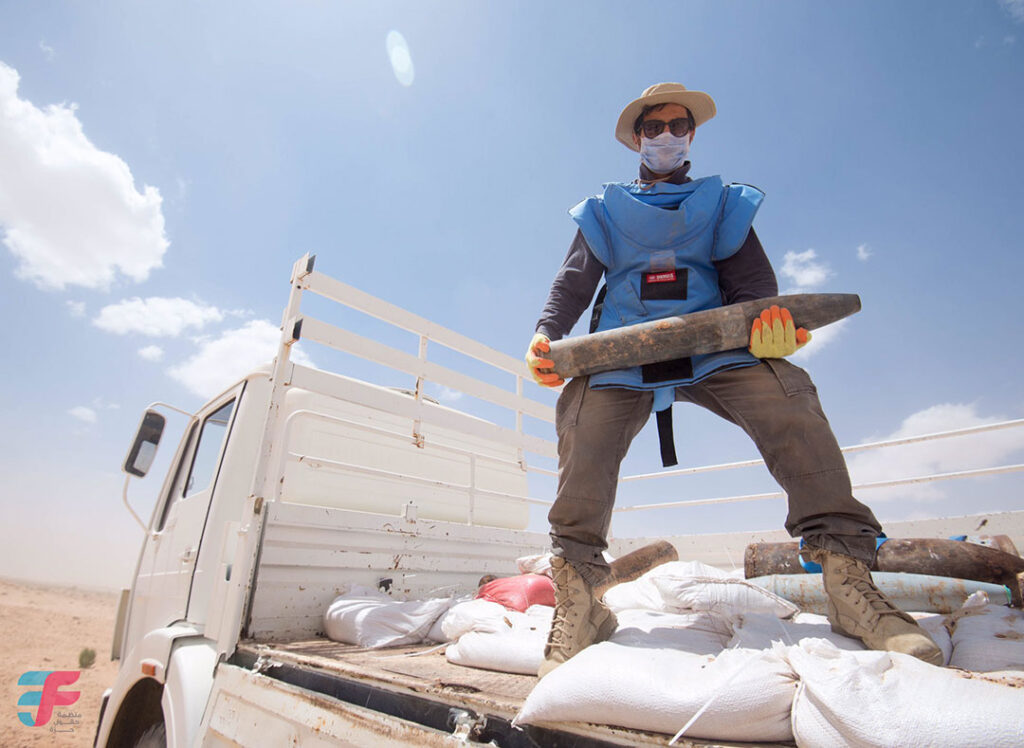ADF STAFF
Four years after fighting ended in the southern suburbs of Tripoli, land mines and booby-trapped explosives continue to maim and kill civilians.
Over the past five years, more than 400 people have been killed or injured by hidden explosives across Libya. At least 35 of those explosions were in 2023. The majority of the victims were children like 10-year-old Mohamed Farhat.
Mohamed and his friends were playing in a garden near their home in southern Tripoli when they picked up a piece of what they thought was scrap metal.
The explosion sent three of the friends to the hospital. Mohamed was severely injured.
“We didn’t know it was a weapon,” Mohamed’s friend, 12-year-old Hamam Saqer, told Agence France-Presse.
While Libya’s rival governments continue to vie for control of the country, land mines and other explosives pose a serious threat to the populace. Many of those explosives bear Russian markings — left by the former Wagner Group, the Russian mercenary force that fought alongside eastern military leader Field Marshal Khalifa Haftar during Libya’s second civil war.
Haftar’s forces and the internationally recognized Government of National Accord fought a bloody battle for control of Tripoli between April 2019 to June 2020, after which Haftar’s forces were stopped on the capital’s southern outskirts and sent into retreat.
The retreating troops left land mines and booby-trapped bombs scattered across the landscape, including inside children’s toys and playgrounds. The full scope of the booby traps remains unknown.
Today, in cities such as Tripoli, Misrata and Sirte, demining teams search the rubble of ruined neighborhoods for unexploded ordnance. Just over one-third of mined lands have been cleaned up. More than 43,600 hectares of contaminated territory remain, according to the United Nations Support Mission in Libya (UNSMIL).
“These figures not only highlight the grave challenges we face, but also underscore the vital importance of international partnerships,” Fatma Zourrig, head of UNSMIL’s Mine Action Section, said in May.
UNSMIL is working with the Libya Mine Action Center, the Tripoli-based Free Fields Foundation and The HALO Trust to educate Libyans about the risk of lingering land mines and to train local demining teams to identify and safely dispose of them.
“Despite previous efforts by several humanitarian mine action organizations to remove these lethal remnants of war, there has not been the technical knowledge needed to make Libya’s decimated cities safe,” The HALO Trust wrote on its website. “As a result, families desperate to rebuild their lives have been unable to return to their homes.”
The HALO Trust has trained two mine-clearing teams in Sirte, the city on the central coast fiercely contested by both sides in the civil war. Fighting displaced more than 200,000 residents.
“One pile of rubble at a time, they (demining teams) are now clearing their own city of explosive debris — making it safe for people to return home and rebuild their lives,” The HALO Trust wrote.
In May, the Libya Mine Action Center announced plans to develop a nationwide demining plan. However, even if Libyan leaders return the country to stability, defense officials told AFP it could still take up to a decade to remove all the mines.

